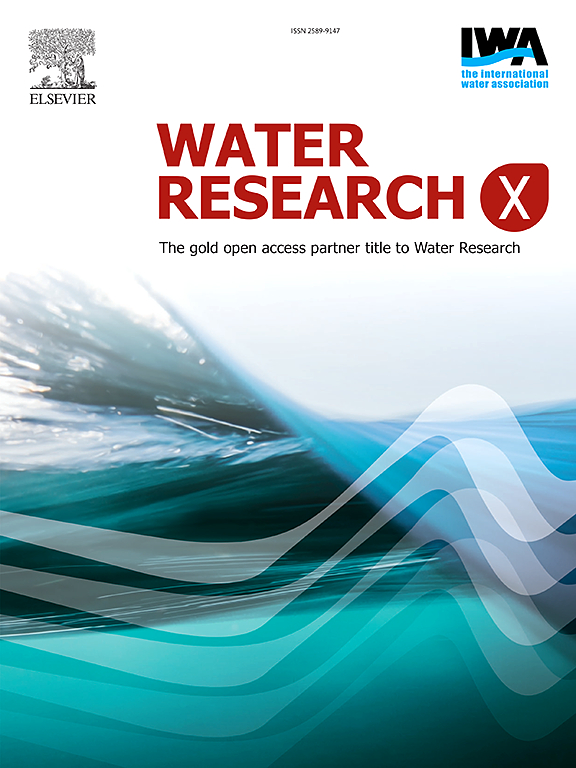New understanding of microbial growth cycle for efficient waste-activated sludge disposal by preserving microbial self-degradation activity during the decline phase
IF 8.2
2区 环境科学与生态学
Q1 ENGINEERING, ENVIRONMENTAL
引用次数: 0
Abstract
Diverse pretreatment methods have been developed for cell-cracking and sludge denaturation to harvest pretreated sludge as the suitable fermentation substrate, but new inoculation is not always working quickly or adaptively for the pretreated sludge. This study established a sludge SDMP method by integrating RL and HSHC to fully use the enriched microorganisms with decomposing enzymes/abilities at the sludge decline phase for organic matters bioconversion. The SDMP method cracked EPS but preserved and enhanced the microbial viability and the activity of enzymes related to hydrolysis and acidifying. Then the VFAs production cycle of SDMP sludge was shortened by 36.25 % than alkaline pretreated sludge, and the yield reached 4482.19 mg COD/L in 3 days with the organic matter conversion rate of 369.36 mg COD/g VSS. Preserved and enriched sludge self-degradation microorganisms composed a critical part of the dominant community, including Mycobacterium, norank_f__Pirellulaceae, IMCC26207, norank_f__JG30-KF-CM45, and Petrimonas. The interaction network centered on them facilitated acidogenic metabolism by reinforcing pathways such as glycolysis, pyruvate metabolism, and the Stickland reaction in amino acid metabolism. This study provides new insights into developing microbial functions for recycling resources from sludge.

通过在衰退阶段保持微生物自降解活性,对有效处理废物活性污泥的微生物生长周期有了新的认识
人们开发了多种细胞裂解和污泥变性预处理方法,以收获预处理后的污泥作为合适的发酵底物,但新的接种方法并不总是能够快速或自适应地处理预处理后的污泥。本研究建立了RL和HSHC相结合的污泥SDMP方法,充分利用污泥衰退期具有分解酶/能力的富集微生物进行有机质生物转化。SDMP法在破坏EPS的同时,保留并提高了微生物活力以及与水解和酸化相关的酶的活性。与碱性预处理污泥相比,SDMP污泥的VFAs生产周期缩短了36.25%,3 d产率达到4482.19 mg COD/L,有机物转化率为369.36 mg COD/g VSS。保存和富集的污泥自降解微生物是优势菌群的重要组成部分,包括分枝杆菌、norank_f__Pirellulaceae、IMCC26207、norank_f__JG30-KF-CM45和petronas。以它们为中心的相互作用网络通过强化糖酵解、丙酮酸代谢和氨基酸代谢中的Stickland反应等途径促进了产酸代谢。该研究为开发污泥资源循环利用的微生物功能提供了新的见解。
本文章由计算机程序翻译,如有差异,请以英文原文为准。
求助全文
约1分钟内获得全文
求助全文
来源期刊

Water Research X
Environmental Science-Water Science and Technology
CiteScore
12.30
自引率
1.30%
发文量
19
期刊介绍:
Water Research X is a sister journal of Water Research, which follows a Gold Open Access model. It focuses on publishing concise, letter-style research papers, visionary perspectives and editorials, as well as mini-reviews on emerging topics. The Journal invites contributions from researchers worldwide on various aspects of the science and technology related to the human impact on the water cycle, water quality, and its global management.
 求助内容:
求助内容: 应助结果提醒方式:
应助结果提醒方式:


